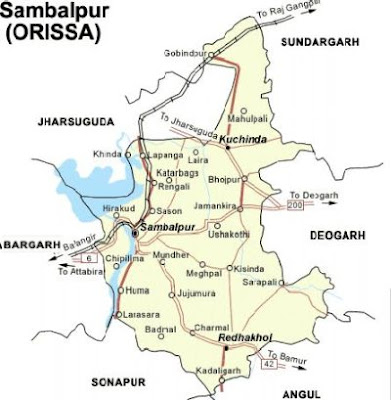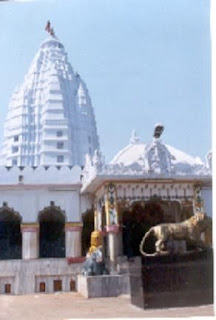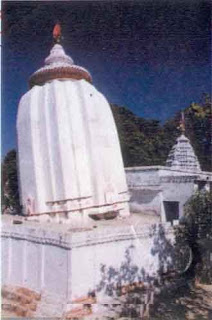TASTE SAMBALPUR!!!
BLESS SAMBALPUR!!!

JAI MAA SAMLAI... (Deity of Sambalpur)

Sambalpur is a city in the western portion of India's Orissa state. It is the headquarters of Sambalpur District. Sambalpur derives its name from Goddess Samleswari who is regarded as the reigning deity of the region.
Sambalpur, situated on the left bank of the Mahanadi River, is an ancient town mentioned in the book of Ptolemy (2nd Century CE) as Sambalaka situated on the left bank of river "Manada," now known as Mahanadi. From the records of Xuanzang, and in the writings of the celebrated King Indrabhuti (oldest known king of Sambalpur), the founder of Vajrayana Buddhism and the Lama Cult, Sambalpur has earned a place in the cultural history of India.
In the time past Sambalpur was famous for diamond trade. French merchant Jean Baptiste Tavernier (1605 – 1689) in his travel account “Six Voyages en Turquie, en Perse et aux Indes (1676–77)” translated into English by Valentine Ball as “Travels in India” (2d ed., 2 vol., 1925) wrote of many famous diamonds mines of Sumelpur (Semelpur) present day Sambalpur (also know as Hirakhand) states that 8000 people were at work in these mines at the time of his visit, in the dry season at the beginning of February.
It was last governed by the feudal chiefs of the Chouhan dynasty till 1803 and then came under the sway of the British Empire. The name of Veer Surendra Sai, who fought an epic struggle against the British Rule, is recorded in golden letters in the history of India's struggle for independence.
PRAISED POSSESSIONS:
1. Maa Samlai Temple...
Goddess Samaleswari: Originally the Goddess was known as Somalaiswari. (Soma - eternal bliss) Somalaiswari - Soma Datri meaning one who bestow 'eternal bliss'.Samaleswari, the presiding deity of this region is enshrined at 'Samalai Gudi' on the bank of Mahanadi River. In ancient times Sambalpur was ruled by the Chouhan. King Balaram Dev, after a long spell of battles, reached the small hamlet of Bargarh, which he made his temporary capital on the left bank of river Jira (The ruins are still there - speaking the days of its glorious past).
Balaram Dev went out in search of a suitable place to establish his capital - finally reached the southern bank of river Mahanadi, pitched camp in a small settlement named Chourpur. While taking a break he with amazement observed, two of his ferocious hunting dogs, being chased off by a rabbit, startled - he pondered over the matter, but could not come to any rational explanation. The same day Somalaiswari the presiding deity of the area came to him in a dream, she directed him to build a temple for her on the left bank of the river Mahanadi and thus the temple.
Samalaiswari the presiding deity of the area came to him in a dream, she directed him to build a temple for her on the left bank of the river Mahanadi and thus the temple.
(Samlai temple from Backside)

(Samlai temple- Side view)
2. Leaning Temple of Huma...

The leaning temple of Huma about 25 km from Sambalpur. Located on the banks of the Mahanadi, the 17th century temple of Huma leans at an angle of 47 degrees to the west. The temple is dedicated to Lord Bimaleswar. The special type of fish found here are called as 'Kudo' fish. They are said to be so tame that they will eat sweets and other foods from the hands of devotee who bathe close to the temple. During auspicious days they are called by their names and given the 'prasad' of the God. Here nobody tries to catch them as they are believed to be the assets of the God.
(Temple of Huma Leaning at 47 degrees)
3. Hirakud Dam (Worlds Longest)...

Hirakud Dam is built across the Mahanadi River, about 15 km from Sambalpur in the state of Orissa in India. Built in 1956, the dam is a large composite structure of earth and cement that forms a 55 km long lake.
Hirakud Dam has the distinction of being the longest dam in the world, about 4,841 meters in length itself and about 16 miles (26 km) in length alongwith its dykes. It was the first major multipurpose river valley project after India's independence.
4. The Hirakud Reservoir (Asia's Largest)...
The longest dam in the world has a drainage area 
of 133, 090-sq-kms (51,386 square miles).
From horizon to horizon, the reservoir forms the
largest artificial lake in Asia with a shoreline over
640-km.
Location : 16-km from Sambalpur, Orissa
Coverage Area : 133, 090-sq-km
Significance : The Largest Artificial Lake in Asia
Best Time To Visit : October to March

